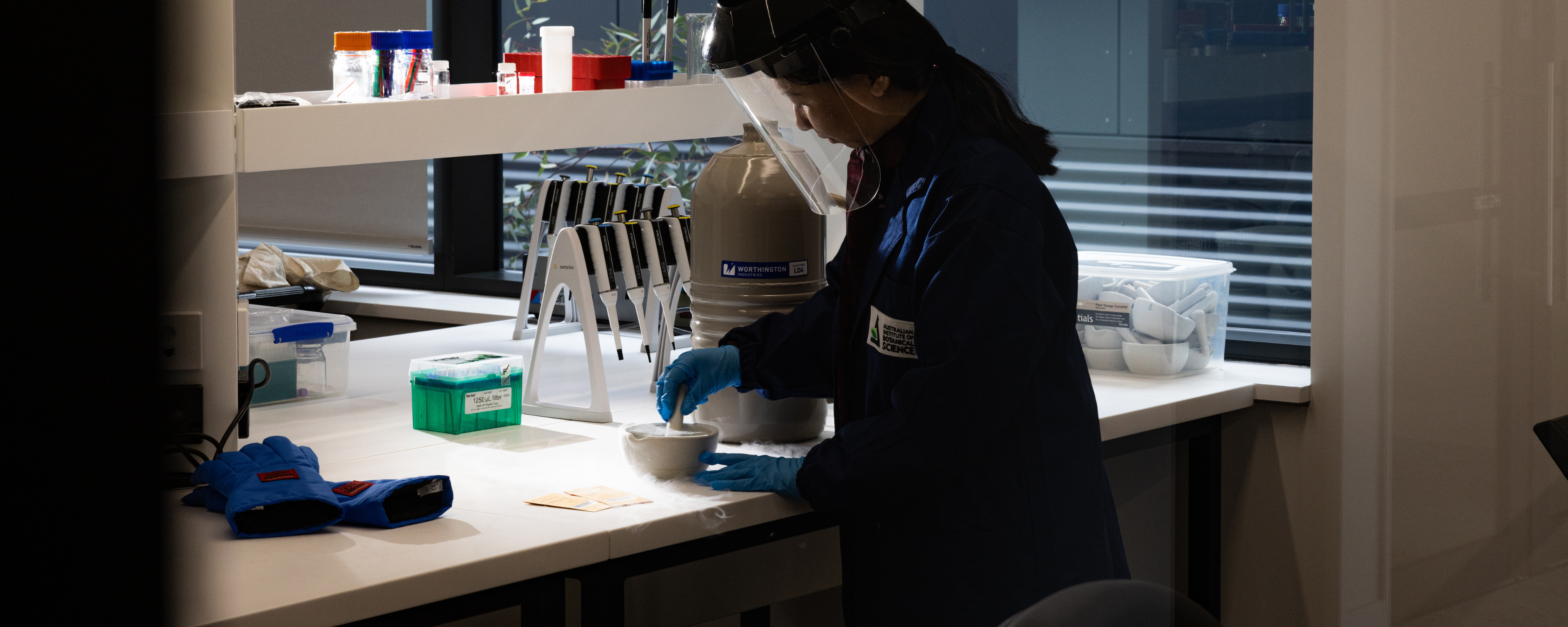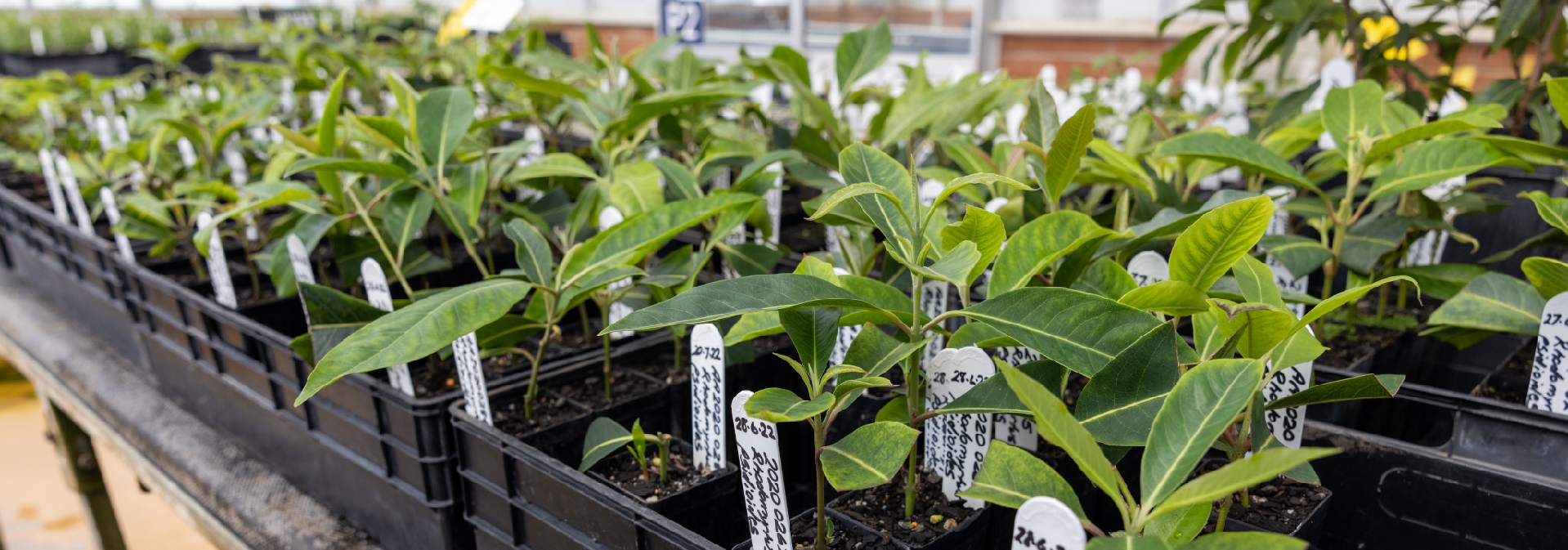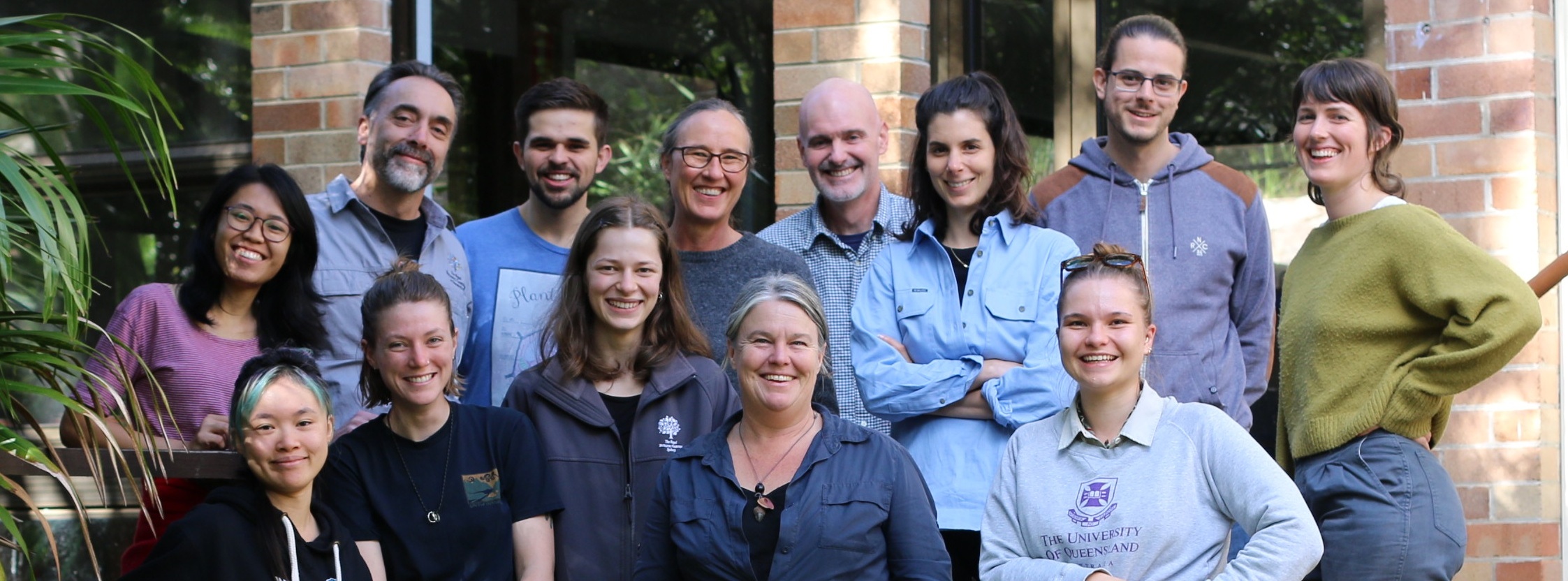The introduced plant disease myrtle rust is impacting at least 350 Australian plant species, with some on their way to becoming extinct in the wild. Genetic information is helping to guide collection of myrtle rust impacted species for safe storage in botanic gardens. One day, these living collections may help restore wild populations.
Key points
-
Myrtle rust is a devastating fungal disease that arrived in Australia in 2010 and has since spread to all states except Western Australia.
-
It impacts at least 350 of Australia’s native plant species in the Myrtaceae family, including eucalypt, paperbark, bottlebrush, tea tree and lilly pilly.
-
Once common plants, such as Native Guava and Scrub Turpentine, have become critically endangered in the wild because of myrtle rust.
-
The only option to save some species is to create living collections in botanic gardens.
-
Genetic information is helping design living collections and breeding programs for rust resistance, to ensure they are genetically diverse and representative of wild populations.
-
Long term, it is hoped that resistant plants can be returned to the wild to help restore decimated populations
Working together to save species from myrtle rust
Myrtle Rust is having such a devastating impact on native flora that scientists, community groups and First Nations representatives from across Australia and New Zealand are working together to devise an Australasian response. In June 2023 over 100 experts from around the globe met in Sydney to share knowledge at the inaugural Australasian Myrtle Rust Conference. ReCER staff Jason Bragg and Stephanie Chen presented on the role genetics is already having in helping save our most susceptible species from extinction. You can watch Jason and Stephanie’s presentations below, and other presentations from the conference on the Australian Network for Plant Conservation’s YouTube channel (There are over 50 presentations! – evidence of the enthusiasm for minimising the impact of this pest).
What is myrtle rust
Myrtle rust is a fungal disease caused by Austropuccinia psidii and is native to South America. In April 2010 it was detected on the central coast of New South Wales. By December it had spread to Queensland and was detected in Tasmania in 2015. Today it is established in every state, except Western Australia, where rigorous quarantine effects are fighting incursions. The disease has also spread to New Zealand and the Tiwi Islands.
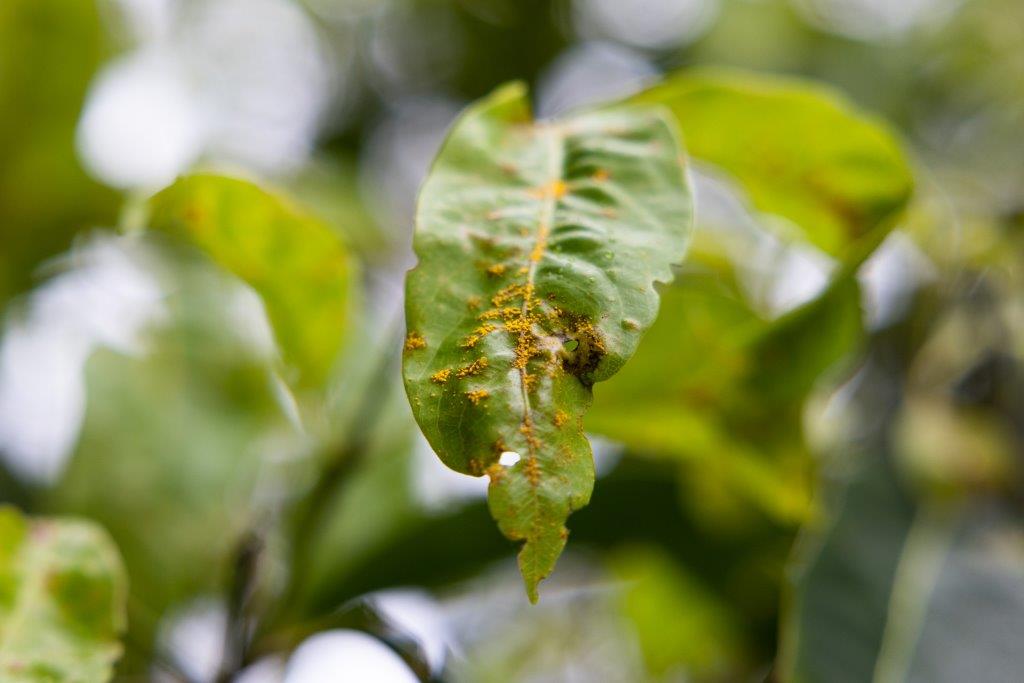
Myrtle rust exclusively impacts plants in the Myrtaceae family, including Eucalypts, tea tree, melaleuca, and lilly pilly. Myrtaceae is in the top three species rich families in Australia, containing around 1700 species nationally. The Myrtle Rust National Action Plan estimates 350 Myrtaceae are affected by myrtle rust. Thirty five are so severely impacted they are at risk of extinction without intervention.
What does myrtle rust do to plants, and how bad is it really?
Myrtle Rust colonises the new growth, buds, flowers and fruit of plants. In severely impacted species it prevents growth and reproduction and has already caused ‘functional extinctions’, where wild populations are no longer producing seedlings. These species will be lost completely once existing plants die. Some of these species, like Native Guava (Rhodomyrtus psidioides) were once very common and played a critical habitat role, but today are listed as endangered. As a result of losing these species, our vegetation communities are changing, with unknown consequences.
Species severely impacted by myrtle rust are already, or will soon be, functionally extinct in the wild. The only option we have, right now, is to take cuttings and grow these species in safe myrtle rust free ‘living collections’ while research is conducted.
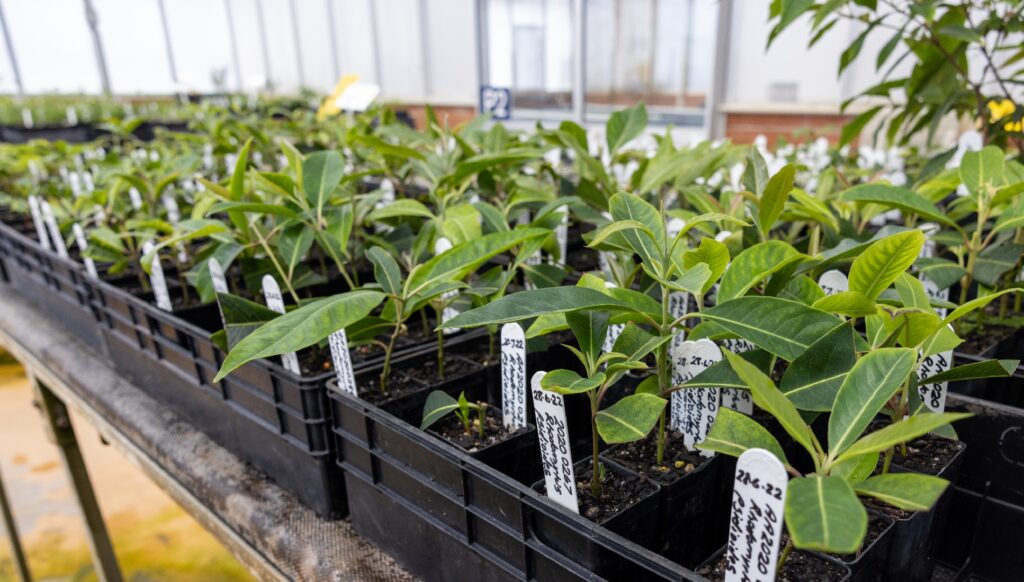
What can genetics do to help myrtle rust impacted species?
ReCER is using genomic tools to help minimise extinction risk for species susceptible to myrtle rust. Genetics is helping in the following ways:
1. Designing living collections that are genetically diverse and representative of wild populations.
To do this leaf samples from across the known geographic range of susceptible species are compared with plants in the living collections. If genotypes (genetic variants) are detected in the wild that are not represented in the living collections, staff from the New South Wales Saving Our Species program are taking cuttings and sending them for propagation at the Australian Botanic Garden Mount Annan.

2. Minimising duplication of clones and closely related plants.
The maintenance of living collections is expensive, so it is important they capture genetic diversity efficiently, without unnecessary duplication.
Only one lineage (plant) from each genotype is required. Some native plants produce suckers. In the wild, these suckers can grow into large trees that may appear to be separate plants or seedlings, but in fact, are genetic clones (ramets). The only reliable method of detecting clones in the field is by digging to the roots and following underground stems. Using genetics, however, we can identify clones and streamline collections.
Genetic information can also provide insight into the relationship between plants. Closely related plants are often treated like clones, as their genotypes are very similar (and hence add little to overall genetic diversity and adaptive capacity) and take up space and resources in living collections.
3. Identifying plants with high levels of resistance to myrtle rust.
Field observations, coupled with controlled infection experiments, are being used to identify plants (resistant genotypes) with complete or partial resistance to Myrtle Rust. Genetic analyses can then be used to identify markers that are associated with the observed resistance.
“Genetics won’t solve the myrtle rust problem, but it can help save species from extinction by helping to breed for resistance and design collections that may eventually be reintroduced."
4. Informing strategic cross-breeding between resistant and less resistant individuals.
Plants with rust resistance can be crossed with plants identified to have unique or diverse genotypes. This can save valuable genetic diversity that may otherwise be lost.
5. Identifying plants with resistance and high genetic diversity to be reintroduced and help bolster wild populations.
The long-term goal is to one day reintroduce resistant plants back into the wild. Selecting the combination of plants that represents the most genetic diversity or variation will be crucial for creating populations that will survive long-term, reproduce, and tolerate a range of threats.
Myrtle rust susceptible species ReCER is studying
Genetics cannot, in isolation, save species from myrtle rust. The ReCER team works with partners across Australia to identify priority actions for species impacted by myrtle rust.
The species we are currently working on include: Rhodamnia argentea, Rhodamnia rubescens, Lenwebbia sp. Main Range, Rhodomyrtus psidioides, Syzygium oleosum and Melaleuca quinquenervia.
Learn more about myrtle rust and what researchers at the Botanic Gardens of Sydney are doing to minimise its impact in the above What the Flora episode.

Chantelle Doyle
Conservation Genomics Outreach Coordinator

